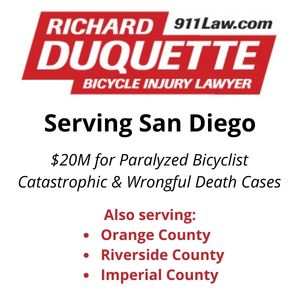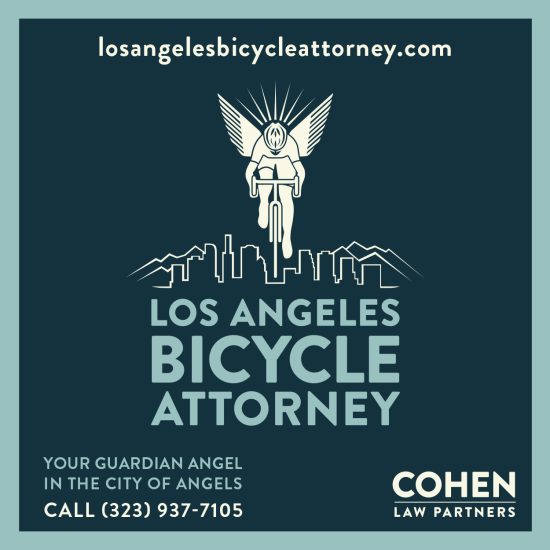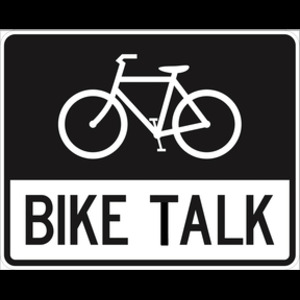 It’s a simple question, really.
It’s a simple question, really.
Why should L.A. area cyclists give a damn about a freight transportation project — especially one that would follow the course of the San Gabriel River, the near-mythical waterway that flows well east of Downtown, where most Angelenos fear to tread?
The answer is equally simple.
Because it has the potential to dramatically transform transportation and livability of the east L.A. basin, bringing renewed life to communities currently choked by diesel fumes and roadways gridlocked with big rigs. And at the same time, restoring one of L.A.’s concrete-clad water disposal systems to the natural, free-flowing waterway it was before fears of flooding overwhelmed common sense and drove nature to its knees.
Oh, and it includes a bike path, too.
Rick Risemberg, of Bicycle Fixation fame, wrote me last week to call my attention to a proposed project I had been only vaguely aware of, and to which I hadn’t given more than a few moments thought.
GRID — the San Gabriel River Infrastructure Development project — would replace the current system of loading cargo at the Ports of Los Angeles and Long Beach with integrated cargo cranes that would load cargo containers directly onto electric trains, cutting offloading time from 36 hours to two. And at the same time, eliminating the need for thousands of semi-trucks that currently ply the ports and clog SoCal freeways.
The trains would then run through special bunker-strength tunnels placed under the banks of the San Gabriel River up to distribution yards in the Inland Empire, where the cargo would be transferred to trains and trucks for transport throughout the country.
The result would be a dramatic reduction in freeway traffic along the 710 and 605 freeways, virtually eliminating traffic congestion and improving air quality. In fact, traffic could be reduced to such a degree that one or both of the freeways might become obsolete and candidates for removal — greatly improving the livability of an area blighted by massive roadways.
At the same time, a second tunnel could be built for passenger rail, tying into existing Metro Rail, Metrolink and Amtrak railways. Existing high-voltage power lines would also be placed in underground tunnels, freeing thousands of acres of power-line right-of-ways for redevelopment, while pipelines could be included for fresh water and sewage.
And the massive construction project would provide an opportunity to rip out the concrete banks of the river, and return it to the natural riparian basin it was before we felt the need to “improve” it. The result would be a natural riverway lined with parks, wetlands and nature preserves, as well as what would undoubtedly be one of the area’s most beautiful and popular bikeways along the full course of the river.
Yes, it would be expensive. Costs would undoubtedly rise well into the billions, if not more.
But it would provide tens of thousands of good, high-paying jobs in the short term, just as construction of the Hoover Dame did during the last Great Depression. And in the long term, it would result in savings and tax revenues that could far exceed the cost to build it, while providing much needed wildlife habitat and improving the quality of life for every community along its banks.
And it would eliminate the need for the much-debated tunnel under South Pasadena to complete the 710 freeway — which would free up hundreds of millions of dollars to pay for construction costs, while preserving the quality of life in one of the area’s most livable communities.
Of course, getting a massive, expensive project like this approved by today’s small-thinking, auto-centric Tea Party-addled Congress would be challenging, to say the least — even though it would be build largely, if not entirely, through private funding.
Then again, a couple of years ago, I would never have imagined that a bike-friendly L.A. might happen in my lifetime, either.
.………
The National Highway Traffic Safety Administration has released statistics for bicycling deaths in 2009; 630 cyclists were killed in the U.S. and another 51,000 injured. That works out to 2% of all traffic deaths, as well as 2% of traffic injuries, and marks a 12% reduction over 2008.
Contrary to common perception, only one-third of the deaths occurred at intersections, while 72% occurred during daylight hours — though they define daylight as anytime between 4 am and 8 pm.
The average age of cyclists killed and injured on the streets has gradually risen over the previous 10 years to 41; cyclists under the age of 16 accounted for just 13% of fatalities and 20% of injuries. Seven times more men were killed than women, and four times as many men were injured.
Forty percent of fatalities involved alcohol use; surprisingly, 28% of the cyclists who were killed had been drinking.
California had more than it’s share of fatalities, with 99 cyclists killed; 3.2% of the total 3,081 traffic fatalities. That works out to 2.68 bicycling fatalities per one million residents, which places us in the top ten most dangerous states per capita. Yet that pales compared to Delaware and Florida — which once again ranks as the nation’s deadliest state to ride, with 107 cycling fatalities — at 6.78 and 5.77 fatalities per million residents, respectively.
Main, Rhode Island, Vermont, West Virginia and the District of Columbia had no bicyclists killed in 2009.
Just in case you’re thinking about moving somewhere a little safer.
.………
Rick Risemberg endorses bike advocate Stephen Box for L.A.’s 4th Council District, with some reservations. LACBC calls on cyclists to bike the vote, offering survey responses from some of the city’s council candidates. Grist says the new bike plan shows the cabbie who ran Mayor Villaraigosa deserves a big, fat tip, while the National Resources Defense Council says the plan paves the way for a greener Los Angeles. The L.A. Times endorses the bike plan, though that might have carried more weight before the council vote.
Tree Hugger offers a list of bike Twitter accounts to follow; Joe Anthony’s Bike Commute News and Long Beach expats PathLessPedaled were the only Southern Californians to make the list. A bike ride a day could keep the doctor away. Utah shoots down a proposed Idaho Stop bill. While New York police continue to crack down on cyclists, they continue to ignore far more dangerous behavior by drivers; the Wall Street Journal says Gotham cyclists really aren’t that bad. Protected bike paths increase riding while easing congestion. The New York assemblyman who proposed a law requiring license plates for all cyclists has wisely withdrawn his bill. Fairfax VA’s bike coordinator position is under attack as a “political statement position.”
Finally, a ban on biking London’s South Bank is reversed, and considerate cyclists are now welcomed. And a British drivers’ organization says kids should glow in the dark; maybe we should require anyone under 16 to wear a flashing neon sign that says “Don’t Hit Me.”
After all, there’s obviously no point in asking drivers to pay attention.
Like this:
Like Loading...











